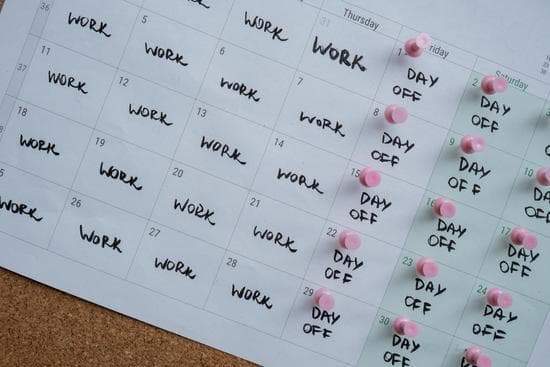If you thought the remote work debate was heated, wait until you hear about the push for the 32-hour workweek law.
Legislation in California and in Congress would amend the Fair Labor Standards Act to reduce the standard workweek from 40 hours to 32 hours for non-exempt employees with employers required to pay overtime compensation to nonexempt employees whose work exceeds 32 hours in a standard workweek.
House Leader Kevin McCarthy previously called such proposed legislation “anti-work and anti-small business” and said “If this absurd policy was ever enacted, it would force the country’s employers to pay more to produce fewer goods and services, all while continuing to fuel the factors that have led to a 31-year high inflation rate. Luckily, this policy has zero chance of ever becoming law.”
CNBC reported in March 2023 that the Thirty-Two Hour Workweek Act introduced by Rep. Mark Takano (CA-39) would apply to non-exempt workers, who typically work hourly jobs across leisure and hospitality, transportation, construction, manufacturing, wholesale and retail trade.
“The serious conversations about the reduced workweek are happening for white-collar professions. What my bill will do is spur conversation about how we democratize this norm to other sectors of the workforce, so everybody benefits,” Takano told CNBC, adding that the legislation would “improve the quality of life of workers, meeting the demand for a more truncated workweek that allows room to live, play, and enjoy life more fully outside of work.”
Critics: 32-Hour Work Week Laws Bad for Business
Critics of such legislation, including the Society for Human Resource Management (SHRM), argue that this “one-size-fits-all” approach would be bad for American business.
Emily M. Dickens, SHRM chief of staff and head of government affairs, issued the following statement last year in response to AB 2932, a California Assembly bill aimed at mandating a 32-hour workweek for employers with 500 or more workers:
“SHRM believes in workplace flexibility that works for both employees and employers. We oppose this legislation because of its one-size-fits-all approach, which requires large organizations to pay overtime for any work in excess of 32 hours without reducing an employee’s regular rate of pay. This bill would also create a significant logistical burden for human resource professionals, especially at companies with operations in multiple states. And it would undoubtedly be bad for business in California, exacerbating staffing shortages, raising labor costs, and making life more difficult for scores of businesses struggling to recover from the worst days of the pandemic.”
Fortunately for employers, the California legislation did not move out of committee.
“AB 2932 gained a lot of attention during the early part of the legislative session but failed to meet committee deadlines for consideration and therefore will not proceed this year. Nonetheless, California employers should be aware that the bill could be amended and reintroduced in 2023,” cautioned the California Labor & Employment Law Blog.
As for Takano’s legislation, he introduced a similar measure in 2021 that withered away without action in the House Committee on Education and Labor where it died.
32-Hour Workweek Proposals Could be a “Job Killer”
When California legislators proposed the 32-hour workweek law, Ashley Hoffman, a policy advocate with the California Chamber of Commerce, called the bill “a job killer.”
“This significant rise in labor costs will not be sustainable for many businesses. Labor costs are often one of the highest costs a business faces. Such a large increase in labor costs will reduce businesses’ ability to hire or create new positions and will therefore limit job growth in California,” said Hoffman.
According to GovTrack, opponents say that Takano’s bill could inadvertently harm workers by cutting their hours, rather than raising their pay as intended.
“Opponents also say the bill would only benefit a subset of Americans, and that subset would likely be the upper-class and upper-middle-class, despite the bill’s progressive sponsors’ claims that it would help the working class,” reported GovTrack.
Joe Pinsker, writing in The Atlantic, said, in truth, mandating a four-day workweek is the dream of a limited set: well-educated, highly-paid workers who manipulate symbols all day—not the nation’s workers as a collective whole.
“It’s very easy for folks sitting back in their chairs to say, ‘Yes, you need to be on a part-time schedule, or a four-day, 32-hour schedule,’ without thinking about the extent to which such folks want the income and are willing to put up with the hard hours,” Dan Hamermesh, a professor of economics at the University of Texas at Austin, told Pinsker. “That’s what bothers me most about this discussion, frankly. It’s very much a bunch of well-to-do folks telling others how much they should work.”
The Washington Policy Center in 2020 weighed in on the negative consequences of 32-hour workweek laws:
- Such laws could increase employer wage costs by at least 12 percent.
- In industries, such as retail where the profit margin is less than 5 percent, many businesses would be forced to raise prices on consumers or lay employees off.
- Employers would need to lay off full-time employees or employ more temporary workers to meet the law’s demands.
- For employees already working on a 32-hour workweek schedule, they would find the cost of goods and services increasing and their dollars not stretching as far.
HR strategist John Sullivan compiled a list of 26 problems a mandatory 32-hour workweek law would create, including:
- The workforce productivity rate will go down if labor costs increase.
- The workforce productivity rate will also go down if employee output decreases.
- U.S. company competitiveness will suffer.
- Customer needs must still be met every day.
- Employees may take a second job.
- It will reduce business collaboration and innovation.
- Employee stress will likely increase as fewer hours may mean a “work speed up”.
- Completing the same work in less time may lead to more errors and accidents.
The Average Hours Worked Per Week in the U.S.
The U.S. Bureau of Labor Statistics (BLS) latest data shows that in August 2023 the average weekly hours and overtime of all employees on private nonfarm payrolls was 34.4 hours – down from a peak of 35 hours in January 2021 but in line with pre-pandemic numbers.
Roy Maurer in SHRM pointed out in the article “Work Hours are Decreasing, but That’s OK” that economists point to shorter workweek as a sign of return to normal.
“Workers are spending fewer hours on the job on average after working at a record pace during the COVID-19 pandemic,” wrote Maurer. “Some observers are concerned the gradual decrease in work hours could be an indicator of impending layoffs or even that overdue recession predicted for this year. But labor market economists say not to worry.”
Economists interviewed for the article said there wasn’t cause for concern unless work hours continued to decline, falling below the normal range.
“There’s been a long-term trend in U.S. workers working fewer hours over the last seven decades,” Andrew Flowers, lead labor economist at Appcast told SHRM. “People are working less overall than a few decades ago.”
The Economic History Association, for example, estimates that in the 19th century, those on farms often worked “first light to dark” and some estimates for manufacturing hours worked to be almost 70 hours per week in 1830, declining to 60 hours per week 1890.
Economists’ estimates of average hours worked showed a continued decline in the 20th century, moving from 58.5 hours per week in 1900 to 43.3 hours per week in 1940. The slide continued gradually from 40.9 hours in 1960 to 39.8 hours in 1988.
BLS numbers show the average hours worked per week dropping from 38.7 hours in 1964 to 34.5 in 1999 – a number that has held steady for almost 25 years.
The Factors that Affect the Average Hours Worked Per Week
Might come as no surprise that the average hours worked per week in the U.S. varies according to many factors.
“Factors that influence your schedule include your industry and whether you work part or full time,” explains the job site Indeed.
Indeed says the following factors can affect how many hours workers put in each week:
- Industry and Job: Some jobs, such as firefighters or surgeons, naturally have extended hours and periods on the job due to the nature of their work.
- Type of Employment: Workers with full-time jobs, part-time jobs, and multiple jobs all affect the U.S. average hours worked per week statistics.
- Employable Age: Those under the age of 18, by law, are eligible to work fewer hours. Also, older workers, especially after retirement age, may choose to work fewer hours.
- Family Situation: Some workers put in fewer hours at work because they must care for family members, while others seek second jobs and more hours worked per week to help make ends meet.
- Location: Some areas of the country have more full-time job opportunities than other areas where part-time employment is prevalent.
- Education: Many workers with only high school diplomas may work longer hours because they are in industries such as agriculture, construction, and other types that do not follow standard 40-hour workweeks.
- Economy: A stable economy promotes a 40-hour per week workload while times of recessions may result in layoffs and workers looking for part-time jobs with fewer hours.
Indeed says the following industries tend to have a longer average workweek than others:
- Marine
- Healthcare
- Agriculture
- Extraction
- Military
- Emergency Services
- Construction






